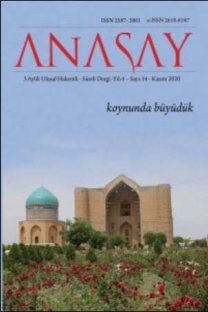SOSYAL HİZMET TARİHİ BAĞLAMINDA MİLASLI İSMAİL HAKKI BEY'İN ALKOL BAĞIMLILIĞI VE KURTULMANIN ÇARELERİNE DAİR GÖRÜŞLERİ
Bağımlılık yapan maddelerden biri de alkoldür. Alkolün kullanımı çok eski tarihlere kadar dayanmaktadır. Hal böyle olunca İslam dininin de yasak saydığı bu maddenin kullanımının tamamen sonlandırılması konusunda hassasiyet gösterip fiilen ve ilmen çalışan isimlerden birisi de Doktor Milaslı İsmail Hakkı Bey olmuştu. İsmail Hakkı Bey, alkolün Osmanlı’da tamamen yasaklanması taraftarıydı. Bu yapılamazsa eğer alkol tüketimini azaltacak birtakım önerilerin Hükûmet tarafından hayata geçirilmesini istemişti. İsmail Hakkı Bey, alkolün ülkede genelde eğlence için içildiğinden bunun önlenebilmesi için sporun geliştirilmesi, kütüphaneler, sergiler, sinema salonlarının açılması, musiki eğitiminin verilmesi ve dini teşkilatın ıslah edilmesi gibi birtakım önerilerde bulunmuştu. Bu öneriler, çalışma alanı insan ve toplum olan sosyal hizmet uygulamaları bağlamında günümüzde bile gerçekten uygulanabilir önerilerdi.
Anahtar Kelimeler:
Milaslı İsmail Hakkı, Alkol, Osmanlı Devleti, Sosyal Hizmet Tarihi
Types Of Women In The Historical Romans Of Necîb Mahfûz
Najib Mahfouz is a famous Egyptian writer known for his novels in Modern Arabic literature and was awarded the Nobel Prize in literature in 1988. His works include historical, socialist realist and symbolic novels.
In his early years, Najib Mahfuz became interested in the Pharaonic period, which was a continuation of Ancient Egypt, and he wrote three novels called ‘Abesu'l-Akdar (1939), Radubis (1943) and Kifah Tibe (1944).
Like many writers, there are different types of women in Najib Mahfuz's novels. Female types, who are generally one of the main characters of the novel take an important role in the plot of the novel. These types of women can sometimes be a mother longing to have a child, or sometimes a passionate woman who seduces the man with all her lust. In this context, Necîb Mahfûz focused on women from all parts of the society and revealed types of women with various identities in his novels.
In this study, the types of women mentioned in Najib Mahfuz's historical novels ‘Abesu'l-Akdar, Radubis and Kifah Tibe will be discussed by analyzing the physical and psychological situation of these women. In this way, the portrait of women drawn by Najib Mahfuz in his historical novels will be tried to be revealed.
Keywords:
Najib Mahfuz ‘Abesu'l-Akdâr, Radûbîs, Kifâh Tîbe, Types of Women,
___
- Devlet Arşivleri Başkanlığı Cumhuriyet ve Osmanlı Arşivi (BCA), (BOA)
- ISSN: 2587-2001
- Yayın Aralığı: Yılda 4 Sayı
- Başlangıç: 2017
- Yayıncı: İshak KÜÇÜKYILDIZ
Sayıdaki Diğer Makaleler
BİLGİ TOPLUMU SÜRECİNDE ŞİİRİN DÖNÜŞÜMÜ
MYANMAR (BURMA) MÜSLÜMANLARININ TARİHİ
TÜRK SİNEMASINDA AİLE KURUMUNUN TEMSİLİ VE DÖNÜŞÜMÜ
TURİZMDE BÜTÜNLEŞTİRMENİN SALİHLİ (MANİSA) ÖZELİNDE DEĞERLENDİRİLMESİ
DEMOKRAT PARTİ DÖNEMİ 19 MAYIS KUTLAMALARININ AYIN TARİHİ MECMUASI’NA YANSIMASI (1950-1955)
ADANA ULU CAMİ MİHRABI ÜZERİNE BİR DEĞERLENDİRME
OYUNLAŞTIRMANIN PAZARLAMADAKİ GÜCÜ
